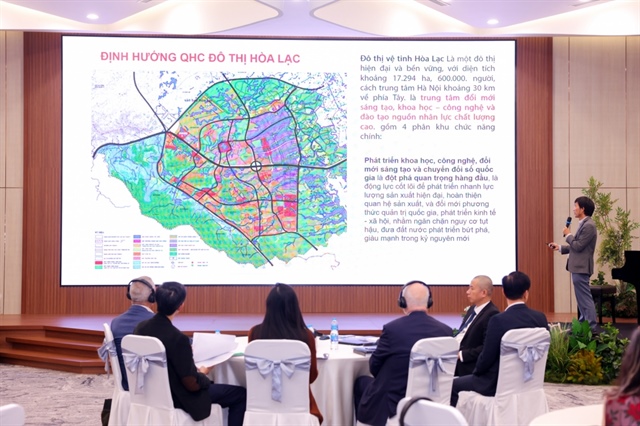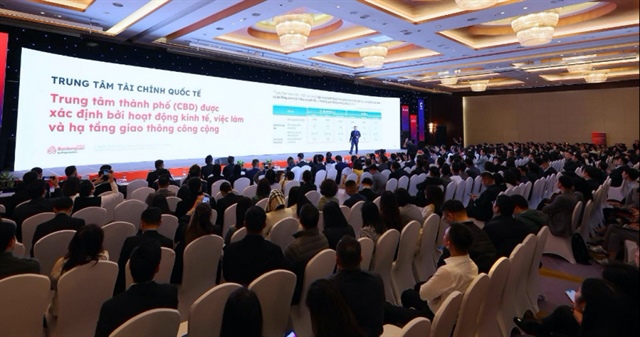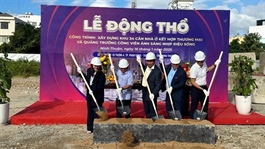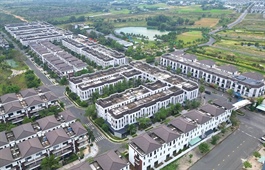Unprecedented opportunities in commercial residential segment
Unprecedented opportunities in commercial residential segment
Vietnam’s commercial residential housing sector is on the verge of transformative change thanks to a pilot that addresses longstanding challenges in land use policies and introduces greater flexibility for real estate businesses. Nguyen Ngoc Phuc, a partner at Nishimura & Asahi, shared with VIR’s Thanh Van his insights on the implications of the move and its potential to reshape the real estate sector.
What are the recent developments in land use policies for commercial residential housing projects in Vietnam?

Nguyen Ngoc Phuc, a partner at Nishimura & Asahi |
At the end of November, the National Assembly passed a pilot for implementing commercial residential housing projects through agreements on acquiring land use rights or having existing land use rights.
This pilot, effective from April 1, grants real estate businesses greater flexibility in selecting land types for their commercial residential housing ventures.
By introducing a more dynamic and flexible framework, it will create unprecedented opportunities for businesses and investors. For those in the sector, early action and strategic planning will be vital to leveraging these opportunities within the evolving landscape.
What are the key challenges with the existing laws that this move aims to address?
The primary challenge is the strict requirement for residential land as a prerequisite for commercial residential housing projects. The 2014 Law on Residential Housing mandated that commercial residential housing must involve residential land for approvals. Despite several amendments and even the introduction of the new 2023 Law on Residential Housing, this requirement remained unchanged.
In practice, many businesses have acquired non-residential land, such as agricultural land, which aligns with planning requirements for commercial residential housing. However, without residential land, they cannot secure approvals. Acquiring large residential land plots for large-scale commercial residential housing schemes is particularly challenging in densely populated cities like Hanoi and Ho Chi Minh City, where residential land is scarce and expensive.
How does the new programme address these challenges?
It introduces much-needed flexibility by removing the mandatory requirement for residential land. Subject to specific conditions and criteria, real estate businesses can now implement commercial residential housing projects by acquiring land use rights through agreements, converting land use purposes for several land types, including agricultural land, either individually or in combination.
By allowing real estate businesses to utilise other types of land for commercial residential housing, the pilot eliminates the key bottleneck that has stalled many developments. It also fosters competition and innovation, enabling developers to explore a wider range of land acquisition strategies.
It’s worth noting that this does not cover cases where commercial residential housing projects are implemented by real estate businesses that acquire residential land use rights, or have existing land use rights for residential land or both residential land, and other land types.
What are the key conditions for pilot initiatives under this change?
The resolution this programme stems from outlines several criteria for commercial residential housing projects to qualify under the pilot. Notably, the land area must comply with the planning requirements of the state authorities and the approved local residential housing development plan. Additionally, they must be located in urban areas or areas planned for urban development.
Furthermore, the total residential land area in pilot projects (including existing residential land and land proposed to be converted to residential land) must not exceed 30 per cent of the additional residential land area in the planning period (compared to the current residential land use status) according to the land allocation and zoning plan in the approved provincial planning for this decade.
The land area must also be included in a list of proposed land lots for pilots, as approved by the provincial people’s council following submission by the people’s committee. The pilot is limited to a five-year period, starting from April.
What are the implications of this for mergers and acquisitions in the real estate sector?
This development has a significant impact on such activities in Vietnam’s real estate. It facilitates the development of new commercial residential housing ventures and improves the legal status of existing ones, creating more targets for acquisition.
This is particularly beneficial for foreign investors, who face restrictions on directly acquiring land use rights from organisations or individuals. Making deals provides a viable entry point for foreign investors to participate in Vietnam’s real estate market.
By making the sector more accessible and transparent, the related resolution lays the groundwork for a surge in foreign investments.



























